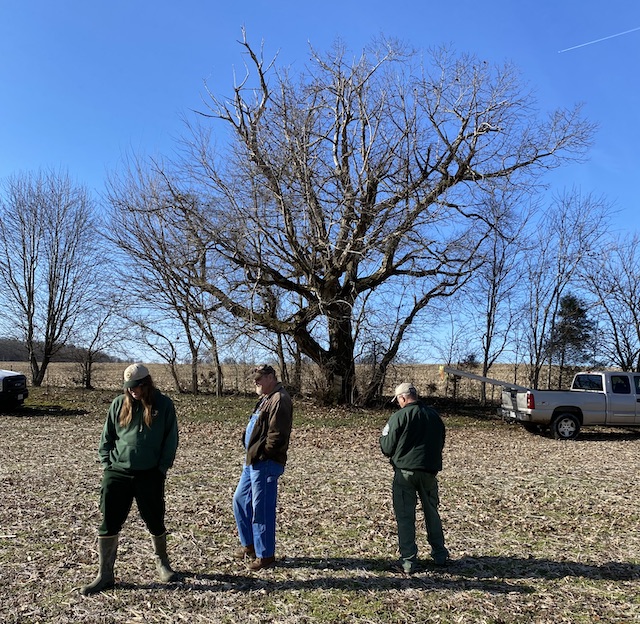| ||||||||||
Dr. Ronald P. Rogers CHIROPRACTOR Support for your body's natural healing capabilities 270-384-5554 Click here for details 


Columbia Gas Dept. GAS LEAK or GAS SMELL Contact Numbers 24 hrs/ 365 days 270-384-2006 or 9-1-1 Call before you dig Visit ColumbiaMagazine's Directory of Churches Addresses, times, phone numbers and more for churches in Adair County Find Great Stuff in ColumbiaMagazine's Classified Ads Antiques, Help Wanted, Autos, Real Estate, Legal Notices, More... 
|
Kentucky Color: American Chestnut Dinosaur By Billy Joe Fudge According to many, Adair County's huge American chestnut is Kentucky's most famous tree. It is famous because it just might be the largest American chestnut to have survived the blight that killed every other of the species East of the Mississippi River. Now, it's fame is poised to spread far and wide. Seasonal Kentucky Forest Ranger Jackie Goodin, retired Ranger Kenny Pyles and Ranger Ricky Parnell joined this ol' retired District Forester on Charles England's farm last week to collect scion material from our old friend. The material has been sent to Penn State University for genetic evaluation. Some of the scions will be grafted to root stock for future evaluation and study. This tree is scarred and damaged by the blight but has never succumbed to its attacks. There has to be a reason it has survived when some 4,000,000,000 others did not. That reason almost has to be a genetic one. Genetic research has grown by leaps and bounds since we started working with this tree back in the nineties. Now, maybe at long last we will discover its secret to survival. A secret that may just launch it into the "Most Famous Tree in America" category and make it a major contributor to the restoration of American chestnut to its former glory as the dominant species in the Eastern Hardwood Forest ecosystem. This story was posted on 2022-03-06 09:19:10
Printable: this page is now automatically formatted for printing.
Have comments or corrections for this story? Use our contact form and let us know.
More articles from topic Kentucky Color by Billy Joe Fudge:
Kentucky Color: Health Threat Kentucky Color: Spring is Near Kentucky Color: Bone Chilling Kentucky Color: The Great Wooded South Kentucky Color: A Tad Unnerving Kentucky Color: Great Wooded South Thanksgiving Adair, by Billy Joe Fudge Kentucky Color: The Chase Kentucky Color: There Was A Time The Homeplace Corn Program View even more articles in topic Kentucky Color by Billy Joe Fudge |



|
||||||||
|
| ||||||||||
|
Quick Links to Popular Features
Looking for a story or picture? Try our Photo Archive or our Stories Archive for all the information that's appeared on ColumbiaMagazine.com. | ||||||||||
|
Contact us: Columbia Magazine and columbiamagazine.com are published by Linda Waggener and Pen Waggener, PO Box 906, Columbia, KY 42728. Please use our contact page, or send questions about technical issues with this site to webmaster@columbiamagazine.com. All logos and trademarks used on this site are property of their respective owners. All comments remain the property and responsibility of their posters, all articles and photos remain the property of their creators, and all the rest is copyright 1995-Present by Columbia Magazine. Privacy policy: use of this site requires no sharing of information. Voluntarily shared information may be published and made available to the public on this site and/or stored electronically. Anonymous submissions will be subject to additional verification. Cookies are not required to use our site. However, if you have cookies enabled in your web browser, some of our advertisers may use cookies for interest-based advertising across multiple domains. For more information about third-party advertising, visit the NAI web privacy site.
| ||||||||||

















































